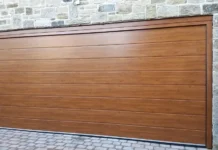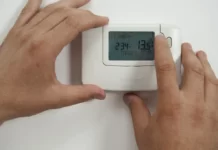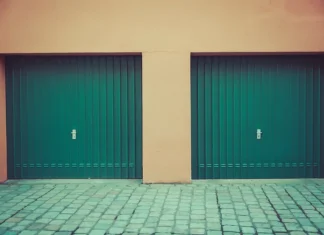It’s no secret that good and even airflow is crucial to maintaining a comfortable home environment. Unfortunately, sometimes vent blockages or leaky ductwork can lead to poor airflow. As a result, you start noticing that some of your rooms are always colder than others or that the air feels stuffy and stale. It can also lead to several problems, such as decreased comfort levels, increased energy bills, and even structural damage.
Thankfully, airflow testing and balancing is a relatively easy process, and you can do it on your own. Balancing the airflow in your home can help fix cold and hot spots, save energy costs, and create a relaxing home environment.
What Is Airflow Testing & Balancing?
Airflow testing involves checking if your air conditioning system is working to the highest level of its efficiency. It entails using various sensors, manometers and monitors to check airflow and temperature fluctuations around your home.
Data from these tests are then used to pinpoint the exact cause of temperature imbalance and what can be done to solve the issue.
Air balancing is the process of adjusting the HVAC airflow in your home to ensure even temperatures and reduce unnecessary energy consumption.
Major Signs for Poor Airflow in Your Home
If you’re having trouble maintaining an even temperature in your home, there is likely something wrong with the airflow. Here are a few major indicators:
1. You may also notice that certain areas of your home are warmer or colder than others. A significant temperature difference indicates poor airflow in your home.
2. A high energy bill is a key sign pointing to an air balancing issue in your home. Poor airflow can make your system work harder than necessary, leading to increased energy usage.
3. Poor indoor air quality is another reason why you may need to consider airflow testing. Low airflow can lead to mold build-up and other allergens as stale air isn’t properly exiting your home. Here’s how you can get rid of mold spores in the air.
Related: Why Is My Air Conditioner Not Blowing Cold Air In My House?
How to Fix Temperature Fluctuations in Your Home
You can fix most of the problems yourself, but it’s best to call an HVAC technician if the issue persists. Here are some basic things that you can do to improve airflow around your home:
1. Fix Duct Leaks
Duct leakage makes it difficult for the conditioned air from your HVAC to arrive at its intended location, resulting in uneven home temperature.
Visually inspect your ductwork for leaks and use mastic or aluminum tape to seal the holes and gaps. Also, insulate your ductwork for maximum benefits.
2. Adjust Dampers
Your HVAC dampers are controlled by levers or rods. If your damper has a lever, it should run parallel to the ductwork. If it is a rod, adjust the rod until you feel the air blowing at the highest speed.
3. Increase the Number of Vents
Your HVAC needs an equal amount of supply and return vents for air balancing. However, older HVAC units only have one central return vent, making it difficult to maintain proper airflow in your house. Increase the number of vents in poor airflow areas.
4. Remove Vent Blockages
Check your AC vents for any obstruction that could be blocking the airflow. If any furniture or decoration pieces are placed in front of the vents, remove them to improve the airflow balance.
5. Create HVAC Zones
HVAC zoning allows you to maintain different temperatures for either individual rooms or specific areas of your home. This helps to reduce hot and cold spots and maintain a comfortable environment.
6. Adjust the Air Vents
Adjusting the HVAC vents is helpful when dealing with cold and hot spots.
To adjust the vents in summer, set your thermostat at 76-78F. Do not change the temperature for 24 hours. In areas that are too cold, adjust the vents to distribute the cold air to warmer areas in your home. If those warm areas feel comfortable after 24 hours, the air-balancing method has worked! If not, continue adjusting till you get to the desired setting. As the cold air from your HVAC sinks, you will have to open the vents on the second floor and partially close them on the first floor.
In winter, adjust the vents in areas that are too hot to distribute the warm air to colder areas. As all the warmth from your heating system will collect on the upper floors, you will have to close/adjust the upstairs vents for even distribution.
7. Use Separate Air Handler for Each Story
As hot air rises, the second floor is usually warmer than the first floor. This makes it difficult to maintain the same temperature in both stories. To solve this issue, use separate air handlers on both stories to maintain an ideal climate in your home.
Benefits of Air Balancing
Here are the top 3 benefits of air balancing:
1. Even Temperatures Throughout the Building
Air balancing ensures you don’t frequently adjust your thermostat settings to get the desired temperature. This provides ease of mind and helps eliminate hold and cold spots.
2. Reduced Energy Usage
Airflow balancing can help your HVAC system to run more efficiently, saving you money on your energy bills. Here are some tips to get the most out of your air conditioning system.
3. Longer HVAC Life
Airflow imbalance can cause the system to wear down more quickly. By balancing the airflow, you can help extend the life of your HVAC system.
In Conclusion
Airflow testing and balancing play an important role in ensuring your HVAC runs efficiently and maintains the ideal home temperature. If you’re experiencing any major signs of uneven airflow, such as high bills or poor indoor air quality, check your ductwork for leakage, adjust your dampers, and remove any vent blockage.












